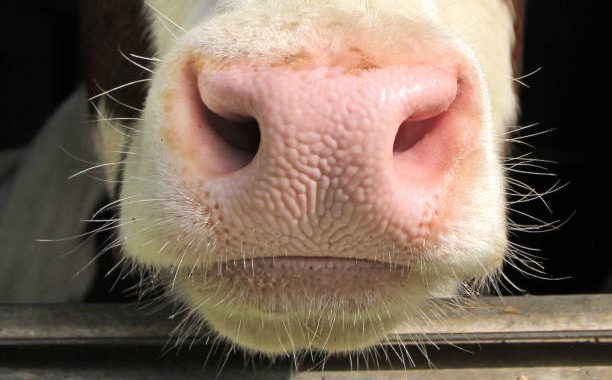Sarah Ann Smith, Director of the Super-pollutants (meaning methane) program at the US-based Clean Air Task Force.
Ok, back to reality…
In our last article, we touched on the intersection of several issues relating to beef production, greenhouse gas (GHG) emissions and the gaps between the public perception of the industry and reality. While there are a lot of moving parts, a quick recap includes:
- An increasing human population with overall increasing wealth (including a demand for more protein in our diets) resulting in increasing carbon intensity, resulting in increasing GHG emission, that together are impacting our collective global climate.
- Globally, “food” accounts for approximately 26% of emissions, of which methane is among the most potent.
- Canada accounts for roughly 2.1% of global food emissions, while “food” accounts for 41.1% of Canada’s total emissions, which represents an opportunity for Canada to significantly improve its overall environmental footprint while improving beef sustainability.
- Drilling down even farther, Canadian beef production only accounts for 0.04% and 2.4% of Canada’s total annual GHG production, respectively.
So, while everyone has to eat, and although Canada and Canadian Beef account for a very small portion of GHG emissions, it is important that we all play our part in reducing the environmental footprint of beef while still doin’ what Alberta does best… servin’ up safe, delicious, nutritious, and sustainable Alberta beef.
As Gentec Head of Beef Operations John Basarab previously stated, there are several ways progress can be made towards achieving these objectives, with each one delivering results on differing time horizons. And while all three can be initiated simultaneously, today, we focus on those that can have an impact relatively quickly. These include altered feeding regimes, the inclusion of feed supplements, and practices that reduce the time to harvest.
For an update on these, we turn to one of Gentec’s supporting pillars, Agriculture and Agri-Food Canada (AAFC). AAFC livestock specialists, including Dr. Karen Beauchemin, working out of the Lethbridge Research Centre, are pursuing several strategies to reduce the GHG impacts of livestock, with much of the work looking at ways to reduce methane emissions. Methane alone accounts for roughly 50% of total GHG produced on a typical beef or dairy operation.
The good news is that AAFC research has identified multiple ways of reducing methane in the immediate term. Many focus on changes to cattle feed or supplementation regimes. And if one believes that “many hands make light work” then the challenge may not be as insurmountable as initially thought. Many big names in the industry are working hard to realize gains in protecting our environment:
- DSM produces a supplement called BovaerÒ that may reduce methane emission from dairy cattle by up to 45%.
- Mootral, a garlic / citric supplement, has shown reduced methane emission by a similar amount. Closer to home, Lakeland College (Gentec alumnus Obi Duranna) is investigating the impact of garlic feed-supplementation on methane production.
- Tim Horton’s parent company, Restaurant Brands International, is involved in research showing that adding lemongrass to cattle diets can reduce methane by about 1/3.
- Other big names looking for ways to reduce GHG emissions of beef include Alltech, Syngenta and Cargill.
- Seaweed, Asparagopsis taxiformis, has some of the most studies and significant reductions in methane production when used as a feed supplement – estimated to be 82% or even higher (99%) under specialized conditions.
More and more work is also being done directly by producers and their representative organizations. Gentec collaborator, Lakeland Agricultural Research Association’s (LARA) Forage and Livestock Program Manager, Megan Wanchuk, points out that:
“LARA has evaluated the yield and nutritional value of alternative feeds (chicory and plantain), which studies have shown to reduce the environmental impact of cattle through decreased rumen ammonia production and reduced urine nitrogen. We are evaluating yield and quality of different cover crop blends for silage or grazing to find an alternative to cereal monocrops that can improve soil health and reduce the amount of fertilizer required. And we’re always looking for opportunities to explore ways to improve the operational efficiency and environmental impact of our members.”
Immediate gains are also beginning to arrive from a source previously viewed as offering benefit only over the much longer term. AAFC has noted that significant gains in efficiency and GHG emissions can be achieved by improving the reproductive performance of cows in a way that reduces the need for replacement heifers.
Gentec-developed EnVigour HXTM, the genomic tool to calculate breed composition and hybrid vigour, also forms the foundation of Gentec’s 2nd generation of products, including the Replacement Heifer Profit IndexTM score. The RHPI combines hybrid vigour with several traits of critical economic importance to beef cow/calf producers, allowing them to better select “genomically” for fertility, longevity, and lifetime productivity. See the case study (scroll manually to page 13) and follow up article in The Blade (scroll manually to page 20)

